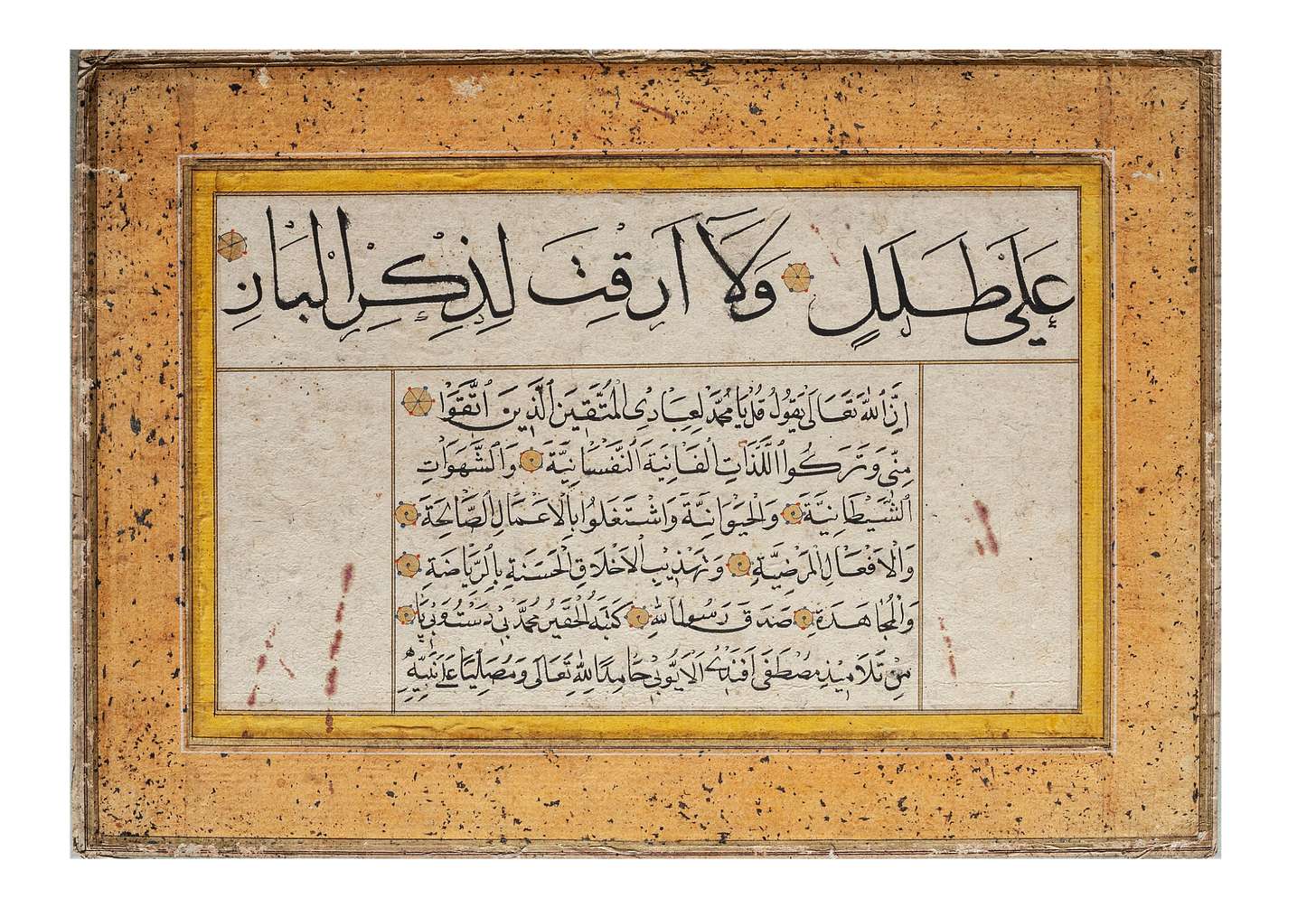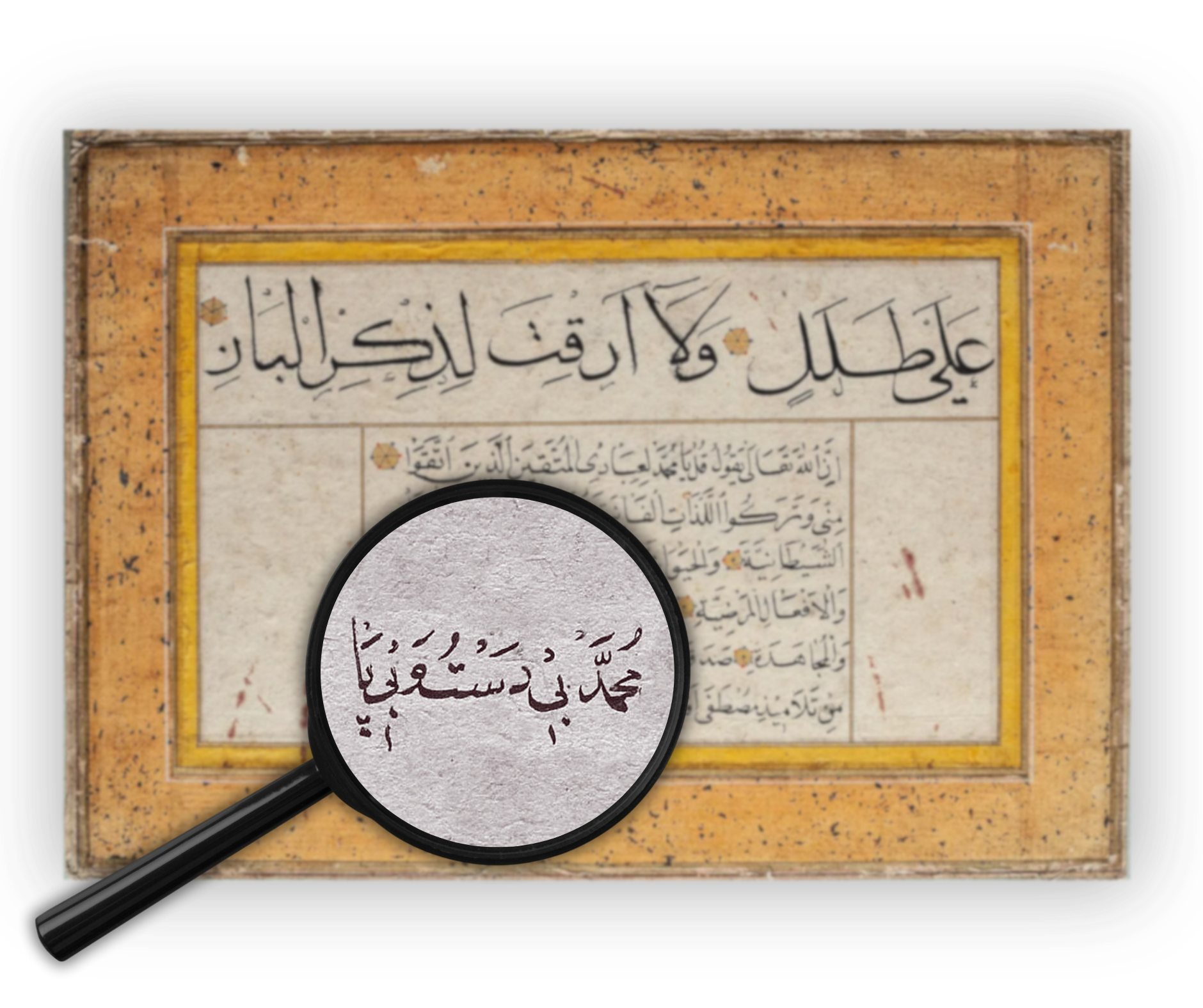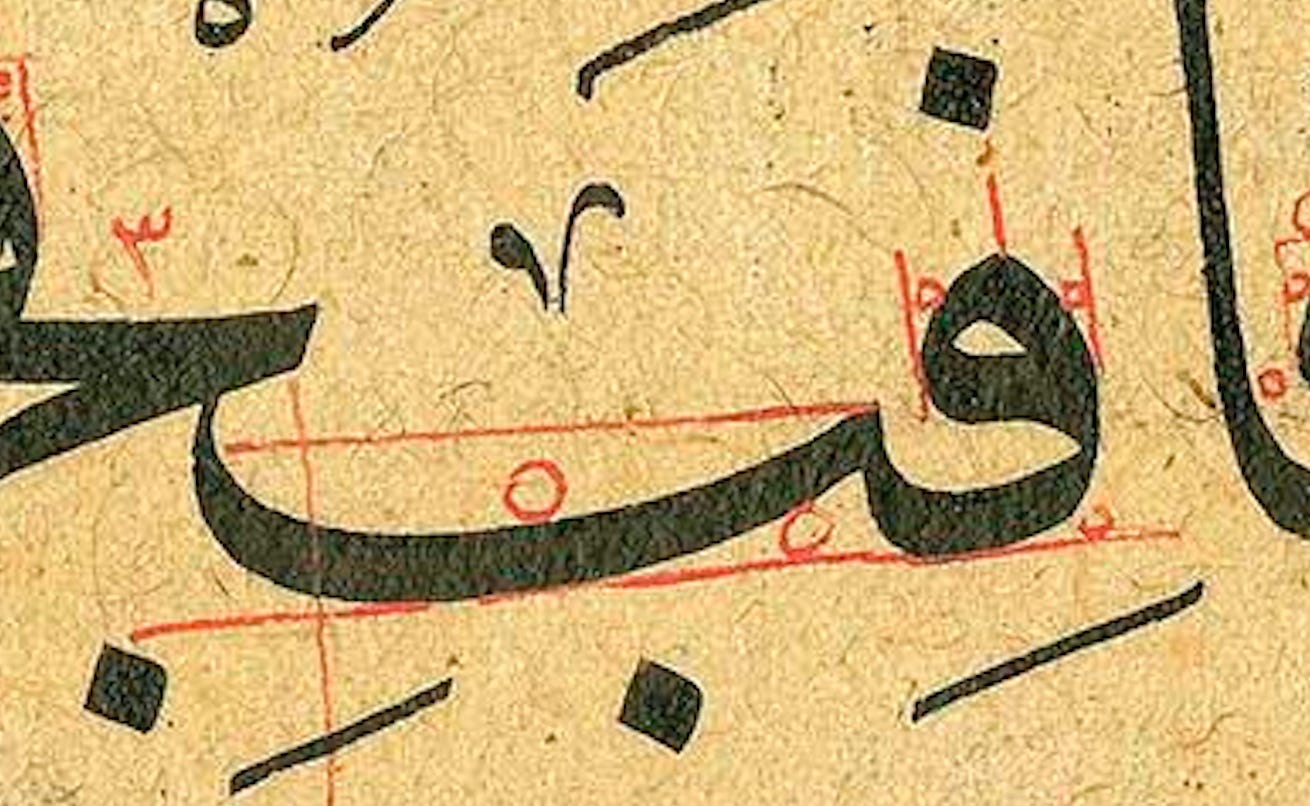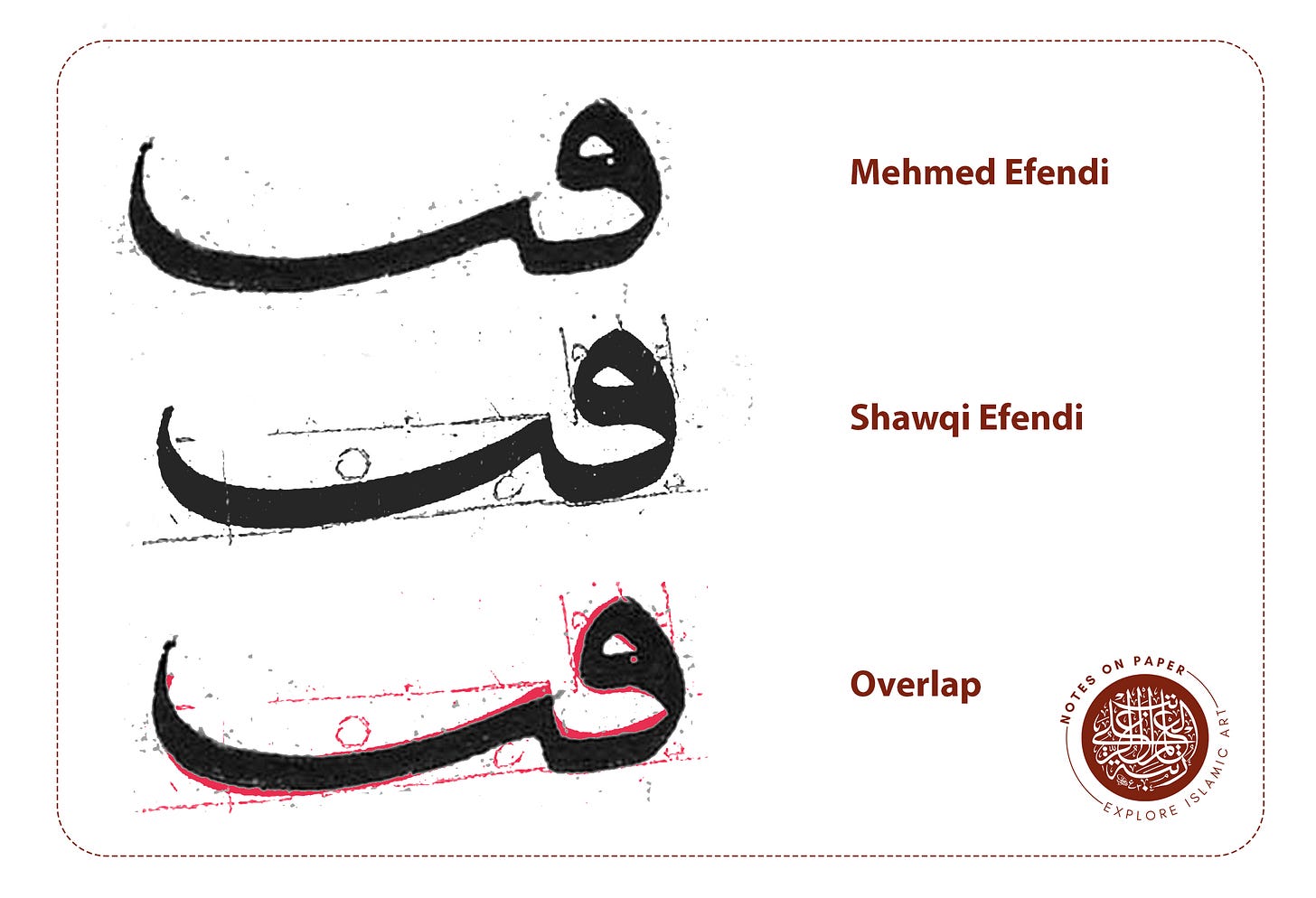Against All Odds: Writing with No Limbs
The Remarkable Journey of a Limbless Calligrapher.
Numerous tales of skill and dedication abound in the realm of calligraphy, but few are as inspiring and bewildering as the story of ‘bi-dast va bi-pā’ Mehmed Efendi, the calligrapher without hands or feet. This blog post delves into the life and achievements of this extraordinary artist whose work challenges our perceptions of disability and artistic expression.
In Farsi (Persian), a person without hands and feet might be referred to as " بیدست وبی پا" (bi-dast va bi-pā), where "بی" (bi-) is a prefix meaning "without," "دست" (dast) means "hand," and "پا" (pā) means "foot."
A Unique Piece in Calligraphy
Within the archives of the Topkapı Palace Museum Library lies a piece that stands out not just for its artistic value but for the incredible story behind its creation. Written in the Thuluth-Naskh script, this piece is a tribute to Mehmed Efendi, also known as "bi-dast va bi-pā" due to his lack of hands and feet.
The intricacies involved in traditional calligraphy, employing reed pens that require constant dipping and precise hand movements, make his achievement all the more remarkable.

The Enigma of the Limbless Calligrapher
The story of bi-dast va bi-pā Mehmed Efendi transports us nearly 350 years back to a tale documented in the "Vakāyiname-i Abdi Pasha," a historical manuscript. After a severe affliction cost him his limbs, Mehmed Efendi, originally from Bolu, moved to Istanbul.
There, against all odds, he learned calligraphy from a renowned master known as "Suyolcu." His skill eventually caught the attention of Sultan Mehmed IV, who, upon witnessing Mehmed's ability to write eloquently using just the stumps of his wrists, granted him a stipend and royal recognition.
The Legacy and Loss
Despite his undeniable skill, the exact extent of bi-dast va bi-pā's contributions to the art of calligraphy remains unknown. Historical records, including those by the esteemed encyclopedist Müstakimzâde Sa'deddin Efendi, mention him but do not detail his works, suggesting that much of his art has been lost to time. However, the piece housed in the Topkapı Palace Museum, once part of the collection of the meticulous master Necmeddin Okyay, stands as a testament to his extraordinary capabilities.
A Quick Case Study
Let’s now examine the قت connection from the artwork and compare it to a proper and well-written example from Shawqi Efendi’s Mashq book to see how remarkable Mehmed Efendi’s lettering is. Here is قت by Mehmed Efendi:
Here is the قت connection by Shawqi:
Let’s overlap them and see how Mehmed Efendi’s letters are proportionally accurate.
In this striking comparison, the finesse of bi-dast va bi-pā Mehmed Efendi's 'قت' connection, crafted despite his physical limitations, is laid alongside the esteemed calligraphy of Shawqi Efendi. The comparison illuminates Mehmed Efendi’s extraordinary skill, showcasing how his work stands tall next to that of the masters, defying the bounds of conventional artistic capability.
Conclusion: Beyond Limitations
bi-dast va bi-pā Mehmed Efendi's story is more than just a historical curiosity; it's a profound narrative about the triumph of the human spirit over physical limitations. His work rivals that of fully-abled masters and serves as a powerful reminder of the boundless potential of human creativity and resilience.

In remembering Mehmed Efendi, we not only pay homage to a lost master of calligraphy but also draw inspiration from his ability to transform immense personal adversity into an artistic legacy.
Though marked by the tragedy of lost works, his story inspires and challenges our understanding of art, ability, and the indomitable will to create beauty against all odds.





